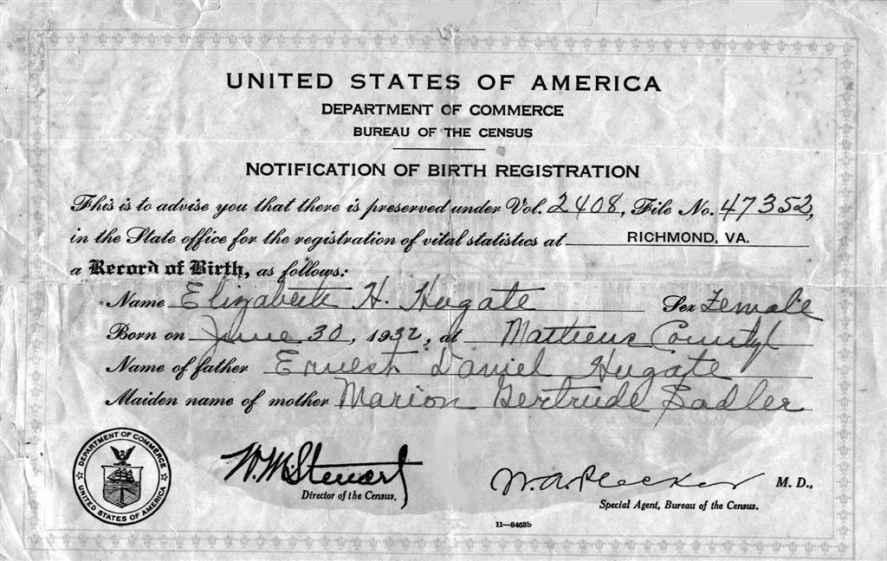Part IV-The Appendix
Credits
____________
AHLB Benner, Jeff A.
The Ancient Hebrew Lexicon of the Bible. College Station, TX: Virtualbookworm.com Publishing Inc., 2005.
APE7
Adobe Photoshop Elements 7.0. CD-ROM. San Jose, CA: Adobe Systems, Incorporated, 2001-2008.
BBA
The Big Box of Art. CD-ROM. Hull, Quebec, Canada: Hemera Technologies, Inc., 1997-2000.
B-LOE Audesirk, Gerald , & Audesirk, Teresa.
Biology : Life On Earth. New York: Macmillan Publishing Company, a division of Macmillian, Inc., 1989.
BMS Hanauer, Ethel R.
Biology Made Simple . New York: Made Simple Books, Inc., 1956.
CDER Stefoff, Rebecca.
Charles Darwin and the Evolution Revolution. New York, NY: Oxford University Press, Inc., 1996.
CLM Soriano, Nancy Mernit, Editor-in-Chief.
Country Living. Red Oak, IA: Hearst Communications, Inc., a Unit of the Hearst Corporation.
CM Frazier, Charles.
Cold Mountain. New York. NY: Atlantic Monthly Press, 1997.
CWWS Shakespeare, William.
The Complete Works of William Shakespeare. Roslyn, NY: Walter J. Black, 1937.
DKIOD
DK Illustrated Oxford Dictionary. New York, NY: Dorling Kindersley Limited and Oxford University Press, Inc., 1998.
DW6 Kantrowitz , David.
DavkaWriter 6. CD-ROM. Davka Corporation and Judaica Press, 1996-2002.
EBUR
Encyclopedia Britannica Ultimate Reference Suite 2004 DVD. CD-ROM. Chicago, IL: Encyclopedia Britannica, Inc. and its licensors, 1994-2004.
EP1650
Epson Perfection 1650 Photo color image scanner. Long Beach, CA: Epson America, Inc., 2001.
EPDN Monroe C. Beardsle, ed.
The European Philosophers from Descartes to Nietzsche. New York: Random House, Inc., 1960.
ERL-04
Encarta 2004 Reference Library. CD-ROM. Redmond, WA: Microsoft Corp., 1993-2003.
FGD Plato.
Five Great Dialogues. B. Jowett, Trans. Roslyn, NY: Walter J. Black, Inc., 1942.
FHPA Simon, Ethelyn, & Stahl, Nanette, & Mortzkin, Linda, & Anderson, Joseph. The First Hebrew Primer for Adults . 2nd ed. Oakland, CA: EKS Publishing Company, 1983.
FTTT Smith, William F., & Liedlich, Raymond D.
From Thought to Theme: A Rhetoric and Reader for College English. USA: Harcourt, Brace & World, Inc., 1968.
H Hersey, John.
Hiroshima. New York, NY: Random House, Inc., 1946.
HELOT Brown, Francis, & Driver, S .R., & Briggs, Charles A.
A Hebrew and English Lexicon of the Old Testament. Oxford: Clarendon Press.
ITH Greenberg, Moshe. 1965.
Introduction to Hebrew. New Jersey: Prentice-Hall, Inc.,
JLS Bach, Richard D.
Jonathan Livingston Seagull. New York: Avon Books, a division of The Hearst Corporation, 1970.
JPS JPS1917.zip, the Jewish Publication Society of America’s 1917 English version of the Tanach downloaded from:
http://www.shamash.org /tanach/text.shtml.
KJV The
Holy [Sacred (set apart)]
Bible: Authorized King James Version. London and New York: Collins’ Clear-Type Press. Printed in Great Britain, 1941.
LOF
Library of the Future The Complete Text of over 5000 Historical, Classical & Cultural Titles. CD-ROM. Lancaster, PA: World Library, 1990-1996.
LPHD Feyerabend, Dr. Karl.
Langenscheidts’s Pocket Hebrew Dictionary : HebrewEnglish. Maspeth, NY: Langenscheidt Publishers, Inc.
MF4.0
MediaFACE 4.0. CD-ROM. Itasca, Il: Fellowes Inc., 2003.
MH Blumberg, Harry, & Lewittes, Mordecai H.
Modern Hebrew. 3rd ed. New York: Hebrew Publishing Company, 1982.
MLSB Magil, Joseph. Magil’s Linear School Bible . Hebrew test and English translation. The Five Books of Moses. Delancey Street, NY: Hebrew Publishing Company, 1905.
MPP10
Micrografx Picture Publisher 10. CD-ROM. Dallas, TX: Micrografx, Inc., 2001.
MWW Capen, Louise I. & Melchior, D. Montefort.
My Worth to the World: Studies in Citizenship. New York: American Book Company, 1937.
NBK
The New Book of Knowledge. Danbury, CT: Grolier Incorporated, 1980.
NDE Landau, Elaine.
Near-Death Experiences. Brookfield, CT: The Millbrook Press, Mysteries of Science, 1996.
OEPD
Pocket Oxford Dictionary. CD-ROM. Oxford University Press.
OMB Howard, Pierce J. (1994). The Owner's Manual For the Brain : Everyday Applications from Mind-brain Research. Austin, TX: Leornian Press, A Bard press book. Third printing, November 1996.
OMU Aristotle.
On Man in the Universe. Edited with introduction by Louise Ropes Loomis. Roslyn, NY: Walter J. Black, Inc., 1943.
PAH
The Pentateuch and Haftorahs. Edited by Dr. J. H. Hertz, C.H., Late chief rabbi of the British Empire. London: Soncino Press, 1967.
PCSB Gilbertson, Jim.
PC Study Bible. CD-ROM. Seattle, WA: Biblesoft, 1988-2003.
POM Liebman, Joshua Loth.
Peace of .Mind. New York: Simon and Schuster, 1946.
RIP Wyden, Barbara W. "The difficult baby is born that way."
In
Readings in Psychology 76/77. Guilford, CT: Dushkin Publishing Group, Inc., 1976. SCD
Standard College Dictionary. Funk & Wagnalls, a division of Reader's Digest Books, Inc. New York, NY: Harcourt, Brace & World, Inc., 1966.
SDBW Strong, James.
The New Strong’s Complete Dictionary of Bible Words. Nashville, TN: Thomas Nelson Publishers, 1996.
SF Setford, Steve.
Science Facts. London: Dorling Kindersley, Ltd., 1996.
TIB Green, Jay P., Sr.
The Interlinear Bible: Hebrew-Greek-English. Grand Rapids, MI: Baker Book House, 1985.
TOS Darwin, Charles. The Origin of the Species by Means of Natural Selection or the Preservation of Favoured Races [Species] in the Struggle for Life. London: John Murry, Albermarle Street, 1859.
TVP
The Virginian-Pilot. Norfolk, VA: Landmark Communications, Inc.
VGT White, Ellen Emerson
Voyage on the Great Titanic: The Diary of Margaret Ann Brady. New York: Scholastic Inc., 1998.
WBE
The World Book Encyclopedia. 50th Anniversary Edition. Chicago, IL: Field Enterprises Educational Corporation, 1965.
WBSA66 Clarke, Arthur C. "Tuning In The Universe". In
Science Year: The World Book Science Annual. Chicago, Il: Field Enterprises Educational Corporation, 1966.
WBSA67 Schucking, E. L. and Biram, Brenda. "From Genesis to Doomsday." In Science Year: The World Book Science Annual. Chicago, Il: Field Enterprises Educational Corporation, 1967.
WBSA68 Thorne, Kip S.
“Death of a Star. “ In
Science Year: 1968. Chicago, Il: Field Enterprises Educational Corporation, 1968.
WNWCD
Webster’s New World College Dictionary, 3rd. ed. New York: Macmillan General Reference, A Simon & Schuster Macmillan Company, 1988.
WOM Gittlesohn, Roland B.,
Wings of the Morning. New York: Union of American Hebrew Congregations, 1969.
Ref. #011469 - 1961 to 1980 Floor Plan of Family Residence.
 Fig. 126. Floor plan drawing by me.
Fig. 126. Floor plan drawing by me.
Ref. #021569 - OCR Excerpts from, Near-Death Experiences, by Elaine Landau (Brookfield, CT: the Millbrook Press. Mysteries of Science, 1996).245 NDE ______________________________________________________________________
Note: The included excerpts represent some of the most commonly reported aspects of near-death experiences. Statements preceded by an asterisk (added by me) are the ones that describe feelings or conditions similar to those which I experienced during and/or following the transcendent spiritual happening I underwent between January 14, 1969 and mid-July 1970.
But please keep in mind that I had never read this or any other book about NDE experiences until after February 1999. /ehh
* Finding it difficult to describe what they have been through. Many people who have had NDEs claim that there just aren’t words to convey the intensity or brilliant splendor of what they saw or felt.
Hearing a doctor or other medical team member announce he or she (the person having the NDE) has died. One woman scheduled for surgery went into cardiac arrest just before the operation. The physicians tried unsuccessfully to revive her. One of her doctors had said, “Let*s try one more and then we*ll give up.” When the woman eventually regained consciousness, the only thing she recalled was hearing the doctor say that sentence.
Being outside their bodies . Large numbers of NDEers say they left their physical bodies and watched what was happening to them from a distance. Eight-year-old Michelle had an NDE after slipping into a diabetic coma. She spoke about leaving her body this way: “All of a sudden, I was floating above my body, looking down at myself. There were two doctors pushing me on one of those stretchers towards a room. Both were women doctors.” . . .
Interestingly, blind people who have NDEs say they can see during these episodes. In such cases they have often been able to describe even small objects in various corners of the operating room.
Even though people having a near-death experience claim to have seen and heard what *s going on, they are unable to interact with those around them. A patient viewed by Dr. Moody recalled what it was like: “I saw them resuscitating me. It was really strange. I wasn*t very high. . . I tried talking to them but nobody could hear me, nobody would listen to me.”
Calm, peaceful feelings . Many people who have had NDEs report having feelings of love, well-being, and warmth at the time. Those in a great deal of physical discomfort prior to “dying” claim that all the pain and distress immediately vanished.
245 The bold font and ellipsis are by me.
*The life review . During an NDE some people see their lives pass before them. This stream of flashbacks begins with childhood, offering the person a chance to access how he or she spent the time on Earth. The NDEer is not condemned for any wrongdoings–the life review is solely for the person*s benefit. *There was no one judging me” one woman said of her NDE life review. “I was judging myself.”. . . .
*Transformed lives. The majority of NDEers feel their experience dramatically changed them. Author and NDE re-searcher Dr. Melvin Morse believes that following death experience, many individuals attach a greater purpose to their existence. He believes they have *more zest for living than ever before. Carol Zaleski, Ph.D., a Harvard University lecturer on religion, agrees, adding that people who have near-death experiences appear to “gain wisdom.”
Such individuals also seem to become more adventurous. One research study on NDEs involved three separate groups: those who had NDEs, people who almost but did not have NDEs, and others who had never come near to dying. Of the three categories, the individuals who had near-death experiences were more willing to take risks than both other groups. The researchers accounted for the results as follows: “The near-deathers were ready to go anytime. They tend not to be afraid of death.”
Kenneth Ring, Ph.D., a professor of psychology at the University of Connecticut, researched the long-range of NDEs. In surveying more than a hundred of these individuals, Ring identified measurable differences in their life-styles following near-death experiences. *For the most part, NDEers tended to appreciate life more. They developed greater concern and compassion for others and became less interested in material wealth and outward signs of status.
In summing up his conclusions, Ring wrote: “After [an NDE] the person *can never again return to the former way of being. [The NDE] comes to take precedence over whatever he has been taught or previously believed. . . . It is not even just an experience that changes one*s life. It is one*s life. And it becomes the source of one*s true being in the world.”
__________
Ref. #022469 - About Contrails
1. Behind the Contrail Curtain
by Jim Scanlon
Exhaust gases from subsonic jet aircraft are affecting the ozone layer, the troposphere and cloud cover over the Northern Hemisphere every minute of every day as hundreds of heavy jets fly back and forth through the North Atlantic Flight Corridor and over the continental US. With commercial air travel expected to increase by 200 percent over the next 15-20 years, there should be growing concern about the effect of jet engines on the Earth's climate and its relation to increasing amounts of ultraviolet radiation reaching the planet's surface —— but there isn't.
When aircraft burn fuel, they expel exhausts containing soot, carbon monoxide, water, three kinds of nitric acid and sulfuric acid directly into the plane's turbulent wake. British Airways estimates that the air travel industry burns 170 million metric tons of fuel each year.
For every kilogram (2.2 pounds) of fuel burned, 1.5 kilos (3.3 pounds) of water vapor are produced. Every year, therefore, aircraft produce 255 million metric tons of vapor, much of it injected into the dry upper troposphere and the even drier stratosphere. If the air is cold enough and there is enough background water vapor, jets will produce a long, distinctly visible, white contrail (short for "condensation trail") across the sky.
Some contrails may spread out and produce high altitude cirrus clouds, indistinguishable from natural cirrus. All clouds act like a simultaneous warming blanket and cooling reflector, depending on their thickness. Thin high altitude clouds warm more than they cool.
Aircraft emissions in the stratosphere —— 7-31 miles (11-50 kilometers) above Earth —— destroy ozone when nitrogen oxides are exposed to ultraviolet radiation from the sun. In the troposphere —— 5.6-8 miles (9-13 km) high —— these same oxides produce ozone, warming cold air and changing Earth's temperature structure.
Is This a Secret?
For one week in March, I attended the eighth annual NASA conference on the atmospheric effects of aviation held in Virginia Beach. There were 278 official attendees, almost all working scientists. I believe I was the only journalist or writer present. I know of no mention in the print media of this, or any of the previous seven conferences. The New York Times didn't mention it, and neither did Time, Newsweek, Science or Nature. While New Scientist has published articles on aircraft contrails, it was unaware of these NASA meetings.
The participants were mostly young, brilliantly articulate, healthy-looking men and women. Americans predominated, followed by Germans and a smattering of Russians and other Europeans. They expressed no emotion or concern over the dangers that might be involved in the apparently unstoppable, exponential growth of the air transportation juggernaut —— despite the alarming numbers tossed around.
The scientific sessions were highly structured, technical presentations on the results of the latest international research in atmospheric physics, chemistry, computer modeling, meteorology, field sampling and aircraft emissions tracking.
And while the conference was not a secret, NASA did nothing to publicize the event. There were no press invitations, no press releases. It would appear that the best way to keep a subject quiet is not to invite attention by spoon-feeding information to the media.
Same Singer: Different Song
The big conference surprise was the session held by S. Fred Singer, a prominent "ozone depletion skeptic" often cited by green-bashers like Rush Limbaugh. Singer argued that the steady increase in air traffic over the last 20 years was responsible for the nighttime warming detected over North America.
Singer was one of the few scientists to generalize the issue, stating that "if this is true, then all the scenarios of warming due to a doubling of carbon dioxide over the next century will have to be speeded up" —— a startling statement from a man who has been called a shill of the energy industry and worse.
Researchers from NASA's Langley Research Center presented evidence that contrails are contributing to global warming and causing local effects over areas with heavy air traffic. In April 1996, they found contrails over New York during 40 percent of the month. Above Arizona, contrails appeared during 30 percent of the month. They concluded that vapor trails are a prevalent feature over US skies and that these trails will "affect the radiation budget at some magnitude." The researchers also recommended that contrail reporting become part of standard meteorological practices, with measurements repeated every few years to assess the effects of increasing air traffic.
German researchers reported that up to one-tenth of the cirrus clouds over Central Europe could be attributed to aircraft. A Swedish scientist said that it is difficult to distinguish between natural cirrus and aircraftcreated cirrus over Europe. He presented a composite satellite photo of Europe's cloud cover that showed one remarkably clear area —— war-torn Bosnia —— where commercial aircraft do not fly.
Is the Stratosphere Threatened?
Air travel today mostly involves subsonic jets cruising in the upper troposphere, but many heavily traveled air routes —— such as the North Atlantic Flight Corridor —— take subsonic jets into the stratosphere almost half the time. This generally occurs on flights near the poles and when the stratosphere lowers in winter. While substances injected in the troposphere remain for a few weeks at most, emissions in the stratosphere can linger for months or years. Jets currently cruise at 10-11 km (6.2-6.8 miles), but the next generation of jets is designed to fly higher, heading into the stratosphere more often. In the 1970s, the major environmental battle over threats to the ozone layer concentrated on the atmospheric effects of supersonic aircraft flying in the stratosphere. Nothing was known then about CFCs or chemical reactions taking place on ice and frozen acid surfaces.
Today, there no longer is any doubt about the impact of large numbers of aircraft flying in the stratosphere. Nonetheless, planes already are flying there —— subsonic planes. Environmentalists have been asleep in their window seats.
Jim Scanlon writes for the Coastal Post. Reprinted with permission from the Coastal Post, PO Box 31, Bolinas, CA 94924, (415) 868-1600.
2. by - Sid Perkins
Immediately after four hijacked airliners slammed into New York's World Trade Center [2001], the Pentagon, and a field in southwestern Pennsylvania, the Federal Aviation Administration shut down all U.S. commercial air traffic for 3 days. The unprecedented grounding of airliners enabled airports to step up security measures. At the same time, scientists stepped up to a unique opportunity to study the influence of high-flying aircraft on Earth's climate.
One way that aircraft may affect climate is through their cloud like contrails, which appear behind jets flying at high altitude. Contrails are made of ice crystals that form within seconds around the small particles present in aircraft exhaust, says David J. Travis, an atmospheric scientist at the University of WisconsinWhitewater. Although jet fuel produces water vapor as it burns, more than 90 percent of the ice in long-lived contrails comes from water vapor already present in the air, says Travis.
Wispy cirrus clouds are the only ones that form naturally at the high altitudes where jets cruise. These thin clouds slightly cool Earth's surface by blocking some incoming sunlight, but they moderately warm the lower atmosphere by trapping a portion of Earth's outbound infrared radiation. Scientists have suspected that contrails have similar but stronger effects.
Travis and his colleagues looked at the average diurnal temperature range (DTR)——the difference between the day's high and low temperatures——reported at more than 4,000 weather stations across the continental United States. During the 3-day hiatus of air traffic last September, the average DTR was a little over 1E°C wider than normal, even though the average DTRs computed for the 3-day periods immediately before and after that period were below normal.
Furthermore, says Travis, the Pacific Northwest, the Midwest, and the Northeast——areas of the country typically blanketed with aircraft contrails in mid-September——showed the largest changes in diurnal temperature range, mostly from increased daytime high temperatures. This bolsters the argument that contrails can significantly affect climate, Travis contends. He and his colleagues will report their findings next week in Portland, Ore., at a conference of the American Meteorological Society.
__________
Ref. #041496 - A Copy of My Notification of Birth Registration Certificate.
 Fig. 127. Scanned copy of my birth certificate registration. The given middle name of my father (Daniel) is in error. His middle name was Delmer. My given nee middle name is Hoskins.
Fig. 127. Scanned copy of my birth certificate registration. The given middle name of my father (Daniel) is in error. His middle name was Delmer. My given nee middle name is Hoskins.









